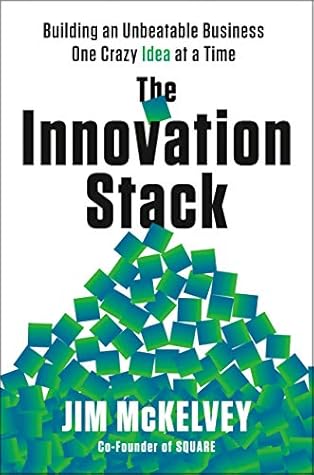More on this book
Kindle Notes & Highlights
Building an Innovation Stack all begins by choosing to solve a problem that nobody has solved before.
It comes down to making a single choice: taking on a problem nobody else has ever solved and doing whatever it takes to solve it. The first step is finding a problem that is perfect for you. There
Copying solutions is smart, but it doesn’t work for some problems. Copying also doesn’t create anything new.
This “wisdom to know the difference”
it would not involve social networking and it would involve mobile phones.
that I understood why most small merchants limited their businesses to cash-only transactions.
So why couldn’t this device process credit cards?
could explain how that card in your wallet is one of over three hundred different varieties, each with different rates and rules.
minor crime, a confession, and a major crime.
each prospective funder in the room to take out a credit card.
we made our confession with a slide titled “140 Reasons Square Will Fail.”
Most VC pitches are nothing but sunshine and graphs moving up and to the right.
Many tech start-up pitches are awash in mathematical models, sales projections, and other data-heavy figures,
we sell stuff nobody needs.
Venture capital is for expansion, not exploration.
VCs fund companies that fit a formula.
Squaring Up
Every other part of a market has cutthroat competition. Any inch of ground abandoned by one company is immediately seized by another.
outside the walls of the city. There
that’s fine—clearly, nobody has succeeded, or the problem wouldn’t still exist.
Getting the user experience right was a critical part of Square’s Innovation Stack.
words, if we could make the data on a credit card appear to be the output of a microphone, we could read the magnetic stripe through the microphone jack.
This was 2009 and Steve was very ill, but he agreed to a meeting,
Jobs was famous for his obsession with industrial design, and also for throwing things he didn’t like at the people who had made them.
card. It wasn’t a card reader so much as it was a cardiac reader.
First, be willing to do what is right for the product, even if the industry is not ready for it yet.
we had been dependent on some byzantine supply chain for our early readers, it could have taken months to correct instead of hours.
an exercise in rapid innovation.
Humans ignore most of what they smell, see, and hear; it’s how our brains cope with a flood of sensory input.* But this creates a great problem for entrepreneurs who are trying to get their new thing noticed. Either the new invention is mistaken for what people are familiar with so they ignore it,* or it is so alien that people can’t understand it so they also ignore it.
but they move with the synchronization of samba dancers when it comes to innovation. Visa
every simplification we built for normal people would make it easier for the crooks.*
Because we had such a massive data advantage, and because our users were mostly small individual accounts, the patterns became predictable. If you can predict your adversaries’ next move, it is a massive advantage. We created some very unique ways to fight our very unique fraud. In the end, what had been described as a mighty dragon was really just ten thousand rats.
A good name should be positive, memorable, pronounceable, and unique. And
image. Rabbits were fast and friendly, but a Google search revealed they already had a contract to endorse a popular vibrator. All
To “square up” means to settle a debt or make something fair.
Squaring up the world of credit cards was our perfect problem.
Most people who start a business in a market they don’t understand just copy what works.
Outside the wall, you are truly an outlaw in the traditional sense of the word.
As the Silicon Valley cliché says, fail fast.
The problem with solving one problem is that it usually creates a new problem that requires a new solution with its own new problems. This problem-solution-problem chain continues until eventually one of two things happens: either you fail to solve a problem and die, or you succeed in solving all the problems with a collection of both interlocking and independent innovation. This successful collection is what I call an Innovation Stack.
People think the credit card reader that plugged into a headset jack was “the innovation” that built Square. In fact, we never successfully patented that idea, so it was available to everyone. We did, however, have other inventions that made us unique—not that we were trying to be.
We didn’t choose invention, but we chose a problem where invention was the only solution.
We built trust with our customers and simultaneously simplified our sign-up.
was not just a way to keep our costs down, it forced us to develop more innovation to further reduce the need for customers to contact us.
Square grew 10 percent every week for two years without advertising.
allowed us to create new ways to fight fraud using data science and game theory.
Necessity mothers invention. You don’t plan to innovate, you don’t want to innovate, you don’t aspire to innovate, you have to innovate. It begins by putting yourself in a situation where innovation is the only alternative.
that some of the most innovative companies were not seeking innovation but survival?
Starvation is opening a coffee shop where nobody drinks coffee. Predation is Starbucks moving in next door.
Diapers.com is now owned by Amazon. And that’s how Amazon behaves when babies are involved.


